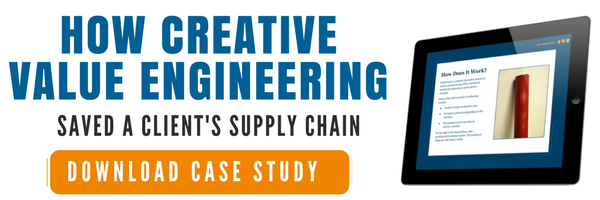 In metal manufacturing, the secret to success is using the right process for the job. You base your production decisions -- as should your vendor -- on cost, time, materials, and end product needs. One question we frequently encounter is whether regular stamping or progressive stamping is better.
In metal manufacturing, the secret to success is using the right process for the job. You base your production decisions -- as should your vendor -- on cost, time, materials, and end product needs. One question we frequently encounter is whether regular stamping or progressive stamping is better.
Sometimes the decision is easy and obvious, but often it’s a little more complicated. The “correct” or best answer for each situation can only be made by assessing the product itself and the client’s ultimate objectives.
How Is Progressive Stamping Different From Regular Stamping?
Here’s what these two processes generally involve:
Progressive Stamping
In this process, a mechanized feeding system pushes metal from the coil through a series of “stations” that can include ...
- Bending
- Punching
- Extruding
- Coining
... or other steps to create your final product. “Pilots” are used to keep the strip in the correct position and maintain control over it. Despite the high degree of precision required, completed units can be produced at a rapid pace once everything is set-up.
Regular Stamping
Here each process is completed on a separate machine. It is usually less prone to production malfunctions, but can increase time and human resource requirements. This process is utilized when lower production quantities are needed, or production speed is not a critical requirement.
Regular stamping might require an initial engineering charge, and then a setup charge for each station. In progressive stamping, initial costs can be higher because of the inherent tooling purchase costs involved in this process. These setup costs must be spread over the total production run to determine which option is a smarter approach.
The lead times for regular stamping are usually shorter, due to the more complex setup involved in progressive stamping, but the actual production requires the availability of several machines. Once a progressive stamping situation is set, it can be run exclusively until the final quota is produced.
Advantage of Progressive
In many cases, progressive stamping is perfect for situations that require high-volume components, less scrap production, and lower end unit costs. Other advantages include:
- Production speed: The continuous feed enables more parts to be produced more quickly. A very low cycle time per part can be realized.
- Repeat production: With the tooling already in place, repeat runs are possible without having to produce new dies or incur additional setup costs. A high degree of consistency can be counted on from one run to another.
- Reduced manpower: An individual operator is not required for each machine, and parts do not have to be moved manually from one station to the next.
- Tolerances: A high degree of precision is possible, especially helpful for jobs with critical tolerance levels.
Materials Used in Progressive
Because of their weight, formability, and durability, the metals most commonly used in progressive die stamping include:
- Brass
- Aluminum and Most Alloys
- Steel or Stainless Steel
- Copper
- Titanium
- Zinc
Potential Applications for Progressive
Because of its impressive versatility, progressive die stamping can be utilized by a wide range of industries. Two often-cited example of progressive stamping are that of pull tab lids in the beverage industry and brake calipers in cars. Other examples include washers, oil filter housings, stators and rotors, plus tons of industrial applications:
- Appliances
- Electronics
- Aerospace
- Automotive
- Food and beverage containers
- Home care
- Retail applications
- Office
- Medical
- Defense
Get Your Stamping Done Right!
Companies trying to determine whether or not to use progressive stamping need to take into consideration:
- Part size
- Part complexity
- Total output required
Under the right conditions, progressive stamping can be a high-speed, low-cost method to manufacture individual metal components.


